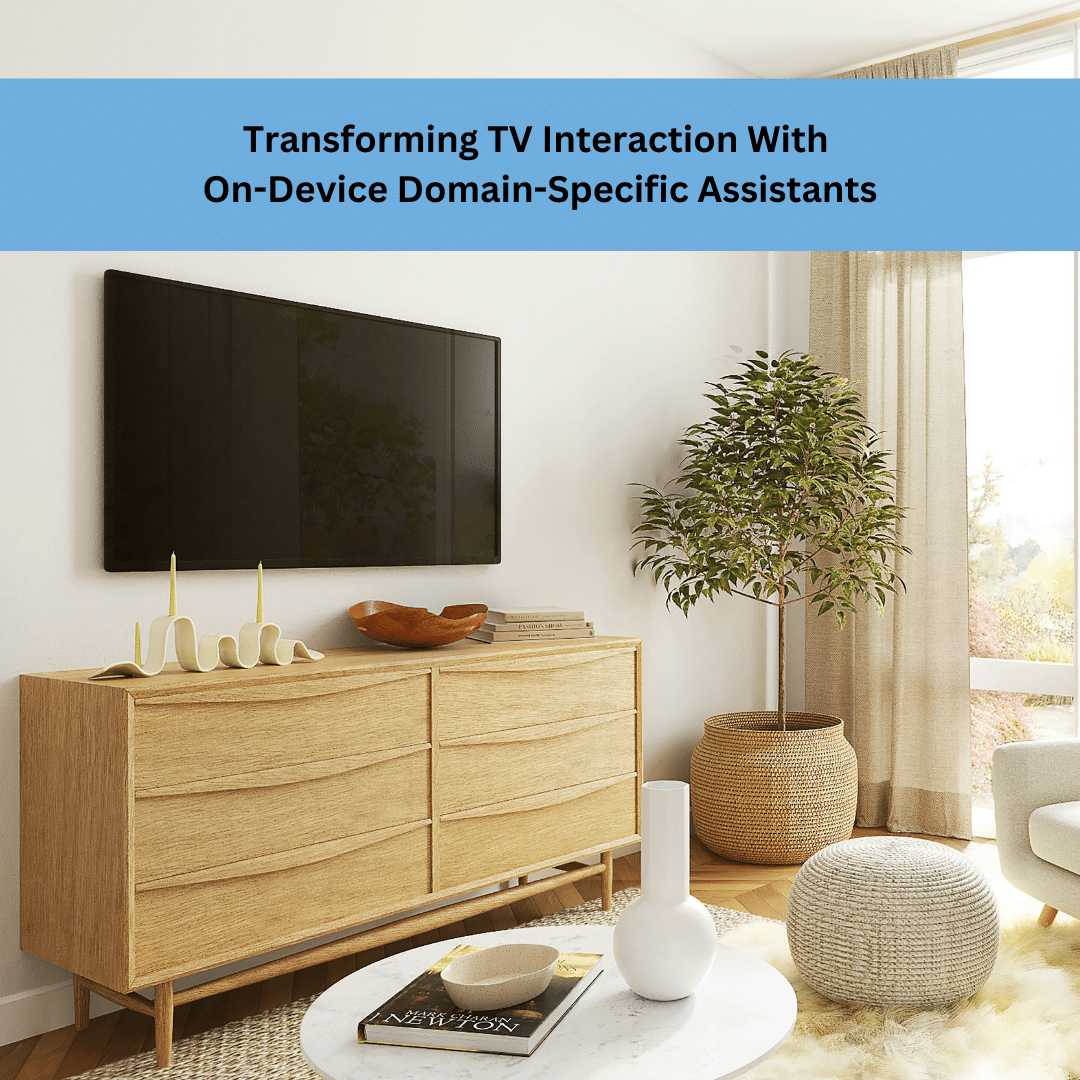Almost 97% of households own a TV, typically in the social hub of the house, the living room. By now we’re all used to talking to Alexa and Siri, and now that functionality is moving to other key devices in the home, like televisions. Users can now interact naturally with their TVs using only their voice – from simple commands like turning up the volume and changing the channel, to complex, AI-driven interactions like learning more about the ads and shows on their screen. This new way of (naturally) interacting with our TVs is powered by Sensory’s TrulyNatural Speech-to-Text (STT) technology.
The Power of On-Device Processing
While many companies offer voice commands, Sensory’s on-device TrulyNatural STT stands out as a clear choice, offering benefits like:
- Enhanced Privacy: By processing voice commands locally, user audio data never leaves the device, ensuring maximum privacy and security.
- Lightning-Fast Response: Without the need for cloud connectivity, voice commands are executed with zero latency, providing a seamless user experience.
- Cost-Effective Solution: One-time deployment and minimal update costs make this solution more economical compared to ongoing (and increasing) cloud service expenses.
TrulyNatural STT: Tailored for Television
Sensory’s TrulyNatural STT, even with its small size, doesn’t compromise on efficiency and functionality:
- Compact Yet Powerful: At just 100MB, the model includes STT and Natural Language Understanding (NLU) capabilities.
- TV-Specific Vocabulary: The system is designed to recognize a wide range of TV-related commands and queries, enhancing the user experience.
- Far-Field Speech Recognition: Using the TV’s built-in microphones, Sensory’s tech can accurately detect commands from across the room, not just from your couch.
- 99% Accuracy: Sensory’s accuracy for domain-specific command sets rivals cloud-based solutions while maintaining privacy and speech.
The Future of Smart Home Integration
The Telly-Sensory collaboration serves as a compelling use case for home electronics manufacturers and media companies involved in screen-based devices. It demonstrates the feasibility and benefits of implementing fully local, natural language control across various devices, from TVs to PCs, tablets, and other in-home devices.
By positioning the TV as a central smart device in the home, this technology opens up new possibilities for home automation and entertainment control. The ability to process hundreds of voice commands locally not only enhances privacy but also paves the way for more sophisticated and responsive smart home ecosystems.
Implications for A Wide Range of Industries
Beyond TVs, Sensory’s on-device domain-specific voice assistants have potential across industries, such as:
- Healthcare – Providers get instant, private access to medical information and patient data.
- Retail – Staff benefit from hands-free access to critical data like inventory and customer questions, without ever leaving the sales floor.
- Automotive – Assistants support navigation and vehicle control systems, ensuring functionality even in areas with poor or no connectivity.
Each of these applications benefits from the key advantages of on-device processing: enhanced privacy, faster response times, and domain-specific accuracy, all while reducing ongoing cloud service costs.
Get started with your domain-specific voice assistant by contacting Sensory today!
